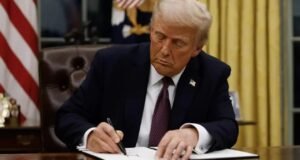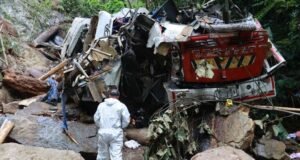
A classified US intelligence report has concluded that recent American strikes on Iran’s nuclear facilities only delayed, rather than destroyed, Tehran’s nuclear program—contradicting President Donald Trump’s claims of total annihilation.
Citing sources familiar with the preliminary findings by the Defense Intelligence Agency (DIA), U.S. media reported Tuesday that the strikes failed to eliminate Iran’s centrifuges and enriched uranium stockpiles. While entrances to some nuclear sites were sealed by the bombings, the underground infrastructure remained largely intact.
The report’s emergence drew sharp criticism from Trump, who accused outlets like CNN and The New York Times of downplaying the military operation. “THE NUCLEAR SITES IN IRAN ARE COMPLETELY DESTROYED!” he posted in all caps on his Truth Social platform.
White House Press Secretary Karoline Leavitt confirmed the DIA report was genuine but dismissed its findings. Calling the leak an attempt to discredit Trump, she said the assessment was “flat-out wrong.” Leavitt added on X, “Everyone knows what happens when you drop fourteen 30,000-pound bombs perfectly on their targets: total obliteration.”
Trump’s special envoy to the Middle East, Steven Witkoff, echoed the administration’s stance on Fox News, calling suggestions of limited damage “completely preposterous.” He said the targeted nuclear facilities—Natanz, Isfahan, and Fordo—were “obliterated,” claiming most or all centrifuges were destroyed. “It will take years for them to resurrect that program,” Witkoff added.
Scope of the strikes
Over the weekend, US B-2 bombers struck two Iranian nuclear sites using GBU-57 “bunker buster” bombs, while a US submarine launched Tomahawk cruise missiles at a third. Trump described the mission as a “spectacular military success,” and Defense Secretary Pete Hegseth said the strikes had “devastated the Iranian nuclear program.”
However, top US military officer General Dan Caine offered a more measured evaluation, stating the operation had caused “extremely severe damage” but stopped short of confirming total destruction.
Iran vows continuity
Iran responded defiantly, stating it had already prepared for such an attack. “Plans for restarting (the facilities) have been prepared in advance,” said Mohammad Eslami, head of the Atomic Energy Organization of Iran, in a statement on state TV. “Our strategy is to ensure that production and services are not disrupted.”
An adviser to Supreme Leader Ayatollah Ali Khamenei said Iran still held enriched uranium and declared, “The game is not over.”
Background and context
The strikes followed an Israeli air campaign launched on June 13, targeting Iranian nuclear sites, military leaders, and scientists in an effort to cripple Iran’s nuclear ambitions.
Trump had initially sought a diplomatic solution to replace the 2015 nuclear deal he withdrew from in 2018. But after weeks of negotiations, he ultimately chose military action.
The US operation was one of the largest in recent memory, involving more than 125 aircraft, including stealth bombers, fighter jets, aerial tankers, and surveillance planes, alongside the guided missile submarine that launched the cruise missiles.
Despite the scale of the assault, questions remain about its long-term effectiveness—and whether it achieved more than a temporary setback to Iran’s nuclear ambitions.
 Weekly Bangla Mirror | Bangla Mirror, Bangladeshi news in UK, bangla mirror news
Weekly Bangla Mirror | Bangla Mirror, Bangladeshi news in UK, bangla mirror news







